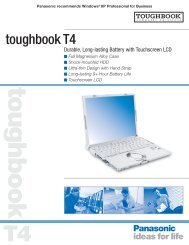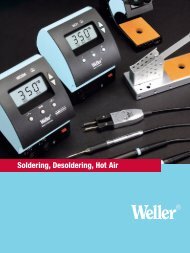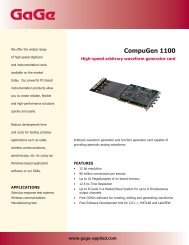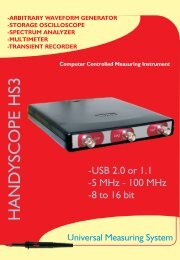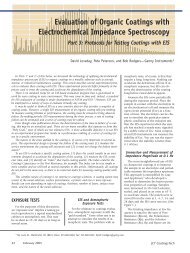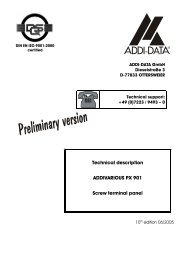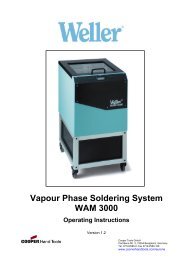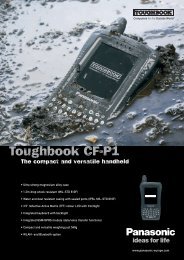CompuScope SDK Manua.. - Egmont Instruments
CompuScope SDK Manua.. - Egmont Instruments
CompuScope SDK Manua.. - Egmont Instruments
You also want an ePaper? Increase the reach of your titles
YUMPU automatically turns print PDFs into web optimized ePapers that Google loves.
In the diagram, the circular memory buffer is shown as an annulus with the physical memory addressZERO at the bottom. Data storage is shown as a spiraling line going counter-clockwise. Storage starts ataddress ZERO and keeps on writing into the memory until it is filled (the spiraling line completes a circle).With memory filled, the <strong>CompuScope</strong> then starts overwriting the data stored in addresses ZERO, 1, 2, .…At the instant when a trigger event is detected, the current memory address is tagged as the TriggerAddress. A specified number of Post Trigger points are captured and then the acquisition is stopped.The memory address at which the acquisition is stopped is designated as the End Address and the addressafter that one is called Start Address. The Pre Trigger data lies between Start Address and Trigger Address.The Post Trigger data lies between Trigger Address and End Address.It is clear from the diagram shown above that memory address ZERO is not necessarily the first point, orStart Address, of the signal being captured. In fact, the physical address ZERO has very little significancein such a system, since the trigger can happen at any time.ZERO is the Start Address when a trigger is received right after the CPU tells the <strong>CompuScope</strong> to GETDATA and data storage stops before the memory has been filled up. This situation is illustrated below:The memory fail condition can be detected by polling at the RAMFULL bit in the STATUS registers. TheRAMFULL bit is reset to ZERO when a GET DATA command is issued and is set to ONE when the<strong>CompuScope</strong> <strong>SDK</strong> <strong>Manua</strong>l Page 15



